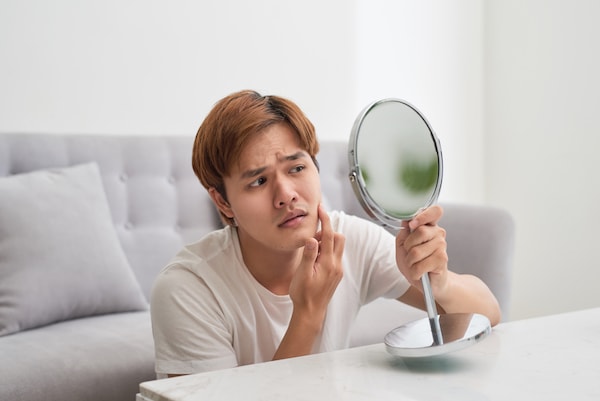If a person suffers from acne as a teenager or as an adult, there is a good chance that a scar will appear during the process of treating the acne that appears on the body. In general, scars are a common side effect of acne. They can occur when the deep parts of the skin tissue are irreversibly damaged and are then replaced by scar tissue.
Thankfully, there are multiple methods that can be used to prevent scarring on a patient as well as treatment options that can also reduce scarring.
What is Acne?
Acne is a skin condition that is considered to be chronic. It impacts close to 633-million people around the world. Acne occurs when the hair follicles of a person become clogged with dead skin cells. Some of the most common symptoms associated with acne include blackheads, pimples, whiteheads, oily skin and scarring. Acne is most prominently seen on areas of the skin that contain a large amount of oil glands. These areas of the body include the face, the back and the upper part of the chest.

Types of Acne Scars
Scarring can impact almost 95% of people that suffer from acne. These scars are formed secondary to any inflammation seen in the dermal layer of the skin as part of the response from the immune system to dead skin cells. The layers of the skin that are damaged are then replaced by fibrous scar tissue.
In general, there are two types of acne scars. The difference in the way they are classified depends on the presence of excessive collagen accumulation or collagen loss in the tissue that is damaged.
- Atrophic acne scars most commonly impact the face of the person. These scars have a depressed surface of the skin that sits below healthy skin tissue. This condition is caused by a loss of collagen in the skin which results in a reduction of the skin’s ability to form healthy connections between the cells and the basal layer. The 3 types of atrophic acne scars are
- Rolling scars – Scars with an irregular appearance with edges that are typically rounded
- Ice pick scars – Scars that are narrow and deep
- Boxcar scars – Wide scars that have a U-shape while including sharp edges that vary in depth
- Hypertrophic acne scars are created when excessive collagen has accumulated in the skin during the formation of scars. These scars are normally raised above the surface of the healthy skin that surrounds it and they usually appear on the chest and the back.
Preventing and Reducing Acne Scars
A balanced diet that is low in carbohydrates is recommended to help decrease the severity of scars. In order to reduce inflammation, patients are advised to use daily skin care products that are hypoallergenic so they do not cause skin irritation. Some over-the-counter skin care products help reduce inflammation and skin discoloration. However, the results are often dependent on the skin type of the patient.
The treatment plan for acne scars depends on the type of scar tissue that has formed on the body. In general, hypertrophic scars are easier to treat than atrophic scars since they do not impact the deep layers of the skin. If a scar is considered to be shallow, it will respond better to a treatment plan.
Patients can use in-office or in-home treatments to treat their acne issues. Acne treatments all work to reduce inflammation, alter hormone levels, target any bacteria and/or skin shedding and sebum production.
Popular at-home acne treatment options include topical therapies that use alpha hydroxy acid, salicylic acid, azelaic acid, nicotinamide, benzoyl peroxide and retinoids. There are also systemic therapies that use keratolytic soaps, antibiotics, anti-androgen medications and hormonal therapy.
When it comes to treating acne, the most commonly used treatments that are listed above include topical benzoyl peroxide, retinoids and antibiotics. Some of the above treatment options can be combined with each other to produce superior results.
In-office acne treatment options include light therapy, dermabrasion, laser therapy, dermal fillers and microneedling.
Before deciding on any kind of acne scar treatment, patients should consult with a board-certified dermatologist to determine which approach is the most effective one to achieve the desired results.
